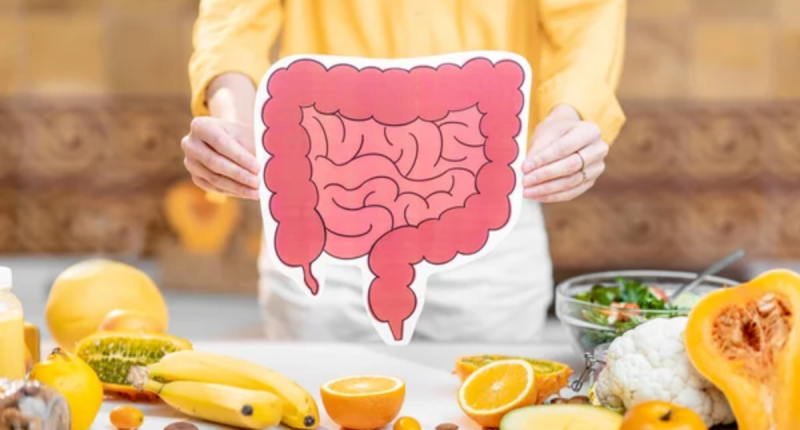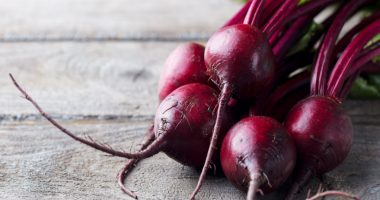The gut is home to trillions of microorganisms, collectively known as the gut microbiome. These microorganisms include bacteria, viruses, fungi and other organisms that help maintain balance and function within our digestive system.
Research has shown that a healthy gut microbiome is essential for optimal digestion, immune function, and even mental health.
However, our modern lifestyle habits such as poor dietary choices, stress, lack of exercise and antibiotics can disrupt the delicate balance of our gut microbiome. This disruption can lead to various digestive issues like bloating, constipation or diarrhea, as well as more serious conditions like irritable bowel syndrome (IBS) or inflammatory bowel disease (IBD).
Fortunately, there are many ways to improve and maintain good gut health. One important aspect is consuming certain edibles that promote a diverse and thriving gut microbiome. Here are some must-include edibles for a healthy gut to try now
1. Probiotic Foods
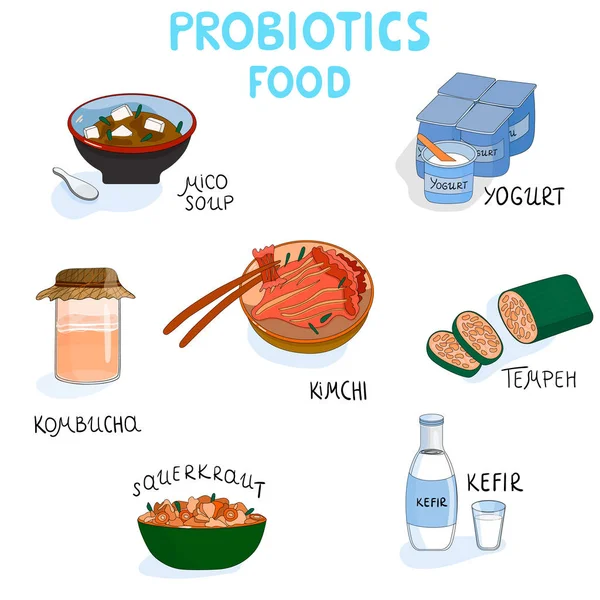
Probiotics are living microorganisms that are similar to the beneficial bacteria that naturally live in your gut. They are thought to help restore the balance of good bacteria in your gut when it has been disrupted by illness or treatment.
Some evidence suggests that probiotics may be helpful for certain conditions, such as irritable bowel syndrome (IBS). For example, a 2023 study found that probiotics helped to reduce symptoms of IBS, such as diarrhea, abdominal pain, and bloating.
Probiotics can be found in a variety of foods, including yogurt, kefir, sauerkraut, kimchi, and miso. They are also available in supplement form.
If you are considering taking a probiotic supplement, it is important to choose one that contains multiple strains of probiotics. It is also important to make sure that the supplement contains live and active cultures.
How to choose a probiotic supplement
Here are some tips for choosing a probiotic supplement:
- Look for a supplement that contains multiple strains of probiotics. Different strains of probiotics have different benefits, so it is important to choose a supplement that contains a variety of strains.
- Make sure the supplement contains live and active cultures. Probiotics are living microorganisms, so it is important to choose a supplement that contains live and active cultures.
- Choose a supplement from a reputable manufacturer. There are many probiotic supplements on the market, so it is important to choose a supplement from a reputable manufacturer.
Talk to your doctor before taking a probiotic supplement
2. Prebiotic Foods
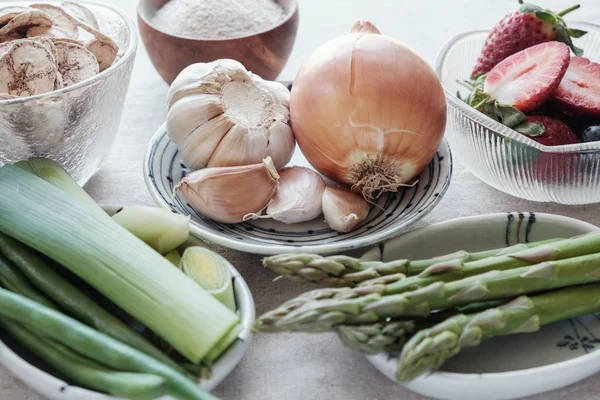
Prebiotics are non-digestible fibers that act as fuel for the beneficial bacteria living in our gut, known as probiotics. Including these types of foods in your diet can help promote the growth and activity of good bacteria in your gut, leading to a healthier digestive system. Examples of food in this category are garlic, onion, asparagus, banana, and oats, flaxseeds, and apples among many.
3. Fermented Foods

One of the key benefits of fermented foods is their ability to enhance gut health. The “good” bacteria present in these foods help balance out the microbiome in our digestive system, leading to improved digestion, better absorption of nutrients, and a stronger immune system.
Some popular fermented foods include yogurt, kefir, sauerkraut, kimchi, miso, and kombucha. These can easily be incorporated into your diet as a delicious snack or added as an ingredient in meals.
Yogurt and kefir are dairy-based fermented foods that are high in protein and calcium. They also contain beneficial bacteria strains such as Lactobacillus acidophilus and Bifidobacterium bifidum that aid digestion and support a healthy gut. Look for varieties that are labeled as containing live or active cultures for maximum benefits.
Sauerkraut and kimchi are traditional fermented cabbage dishes that have gained popularity all around the world. They are both packed with vitamins C and K along with various beneficial bacteria strains that promote gut health. You can enjoy them as a side dish or use them to add flavor to sandwiches or salads.
4. High-Fiber Foods
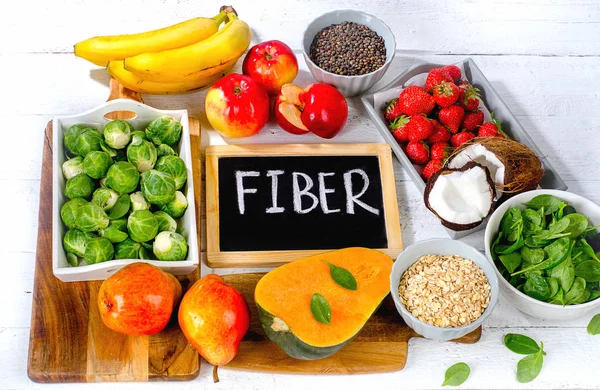
High-fiber foods can help to keep gut health healthy. Fiber is a type of carbohydrate that the human body cannot digest. However, the good bacteria in the gut can ferment fiber, which produces short-chain fatty acids (SCFAs). SCFAs are a source of energy for good bacteria and help to keep them healthy and thriving.
Fiber also helps to keep the digestive system moving smoothly and can help to prevent constipation. Additionally, fiber can bind to toxins in the digestive tract and help to remove them from the body.
High-fiber foods are also a good source of other nutrients, such as vitamins, minerals, and antioxidants. These nutrients are important for overall health, including gut health.
Here are some examples of high-fiber foods:
- Fruits: berries, apples, pears, oranges, grapefruit
- Vegetables: broccoli, Brussels sprouts, cauliflower, carrots, sweet potatoes
- Whole grains: oats, brown rice, quinoa, whole-wheat bread and pasta
- Legumes: beans, lentils, peas
- Nuts and seeds: almonds, walnuts, chia seeds, flaxseed
RELATED: Side Effects of High-Fiber Diet: Understanding the Pros and Cons
5. Omega-3 Rich Foods

Omega-3 rich foods can help with healthy gut health. Omega-3 fatty acids are essential fats that the body cannot produce on its own. They must be obtained from food or supplements. Omega-3 fatty acids have been shown to have a number of health benefits, including reducing inflammation, improving heart health, and boosting brain function.
Some examples of omega-3-rich foods include:
- Fatty fish, such as salmon, mackerel, tuna, sardines, and herring
- Flaxseeds
- Chia seeds
- Walnuts
- Soybeans
You can also get omega-3 fatty acids from supplements. However, it is always best to get your nutrients from food whenever possible.
6. Bone Broth
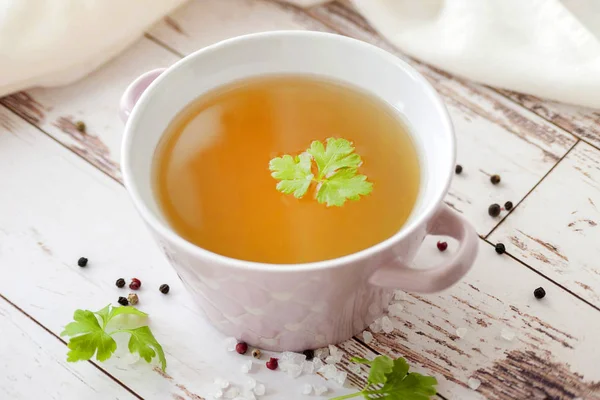
Bone broth is a liquid made by simmering bones and connective tissues in water for several hours. It is a good source of protein, minerals, and amino acids that are beneficial for gut health.
Bone broth can improve your gut health in a number of ways, including:
- Reducing inflammation. Bone broth contains anti-inflammatory compounds, such as collagen and gelatin. These compounds can help to reduce inflammation in the gut, which can improve gut health and reduce the risk of gut diseases such as inflammatory bowel disease (IBD).
- Improving gut barrier function. The gut barrier is a thin layer of cells that lines the digestive tract. It protects the body from harmful substances in the gut, such as bacteria and toxins. Bone broth can help to improve gut barrier function, which can reduce the risk of gut diseases such as leaky gut syndrome.
- Promoting the growth of good bacteria in the gut. The gut is home to trillions of bacteria, both good and bad. A healthy gut microbiome is essential for overall health and well-being. Bone broth contains amino acids that are essential for the growth of good bacteria in the gut.
- Providing nutrients that are essential for gut health. Bone broth is a good source of protein, minerals, and amino acids that are essential for gut health. For example, bone broth contains the amino acid glutamine, which is a major source of energy for the cells of the gut lining.
7. Apple Cider Vinegar
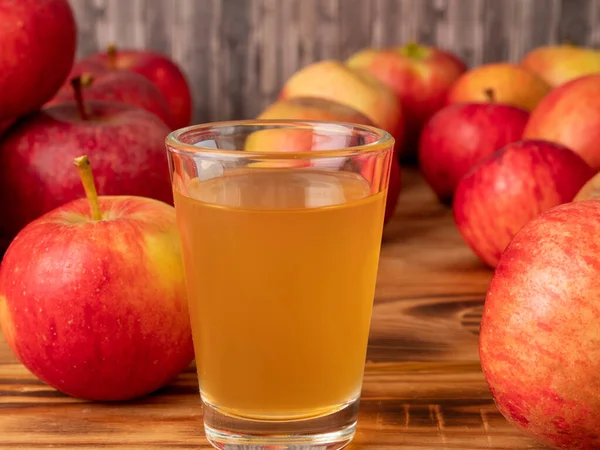
Apple cider vinegar (ACV) is made by fermenting apples and it’s loaded with amazing benefits. ACV is rich in vitamins, minerals, and probiotics that can help improve gut health.
Research on the effects of ACV on gut health is still ongoing, but some studies have shown promising results. For example, one study found that ACV helped to improve gut bacteria diversity and reduce inflammation in people with irritable bowel syndrome (IBS). Another study found that ACV helped to reduce the severity of diarrhea in children with rotavirus infection.
To take ACV for gut health, you can mix one to two tablespoons of ACV in a glass of water and drink it before meals. You can also add ACV to salad dressings, marinades, and other recipes.
It is important to note that ACV is acidic and can irritate the throat and esophagus. It is best to dilute ACV in water before drinking it. You should also avoid taking ACV if you have low stomach acid or GERD.
Some Recipes To Try
These recipes not only taste great but also provide a variety of health benefits to support your gut microbiome.
1. Roasted Garlic Sweet Potato Mash: This creamy and comforting side dish is packed with flavor and nutrients. Sweet potatoes are rich in prebiotic fibers, which serve as food for the beneficial bacteria in your gut. Additionally, roasted garlic adds a punch of flavor while also providing anti-inflammatory properties.
Ingredients:
– 4 medium sweet potatoes
– 2 whole garlic bulbs
– 2 tablespoons olive oil
– Salt and pepper to taste
Instructions:
1. Preheat your oven to 400°F (200°C).
2. Peel and chop sweet potatoes into small cubes.
3. Cut off the top portion of each garlic bulb to expose the cloves.
4. Drizzle olive oil over the cut surface of each bulb and wrap them in foil.
5. Place both the sweet potatoes and garlic on a baking sheet lined with parchment paper.
6. Bake for about 25 minutes or until both are tender.
7. Once done, remove from oven and let them cool for a few minutes.
8.Mash together the roasted garlic cloves and sweet potatoes until smooth and creamy.
9.Season with salt and pepper according to taste.
Serve this flavorful mash as a side dish or enjoy it on its own.
2. Ginger Turmeric Chicken Soup: This nourishing soup is packed with anti-inflammatory ingredients to support your gut health. The combination of ginger and turmeric provides a powerful punch of antioxidants, while the chicken adds a good source of protein.
Ingredients:
– 1 pound boneless, skinless chicken breasts
– 8 cups chicken broth
– 1 onion, diced
– 4 garlic cloves, minced
– 1 tablespoon grated ginger
– 1 tablespoon grated turmeric
– 2 carrots, peeled and cut into small cubes
– 1 celery stalk, chopped
– Salt and pepper to taste
Instructions:
1. In a large pot, bring the chicken broth to a boil.
2. Add in the chicken breasts and let them cook for about 10 minutes until fully cooked.
3. Remove the chicken from the pot and let it cool before shredding it into small pieces.
4. In the same pot, sauté onions, garlic, ginger, and turmeric over medium heat for about five minutes or until softened.
5. Add carrots and celery to the pot and continue cooking for another five minutes.
6. Lastly, add in the shredded chicken and continue cooking until vegetables are tender.
